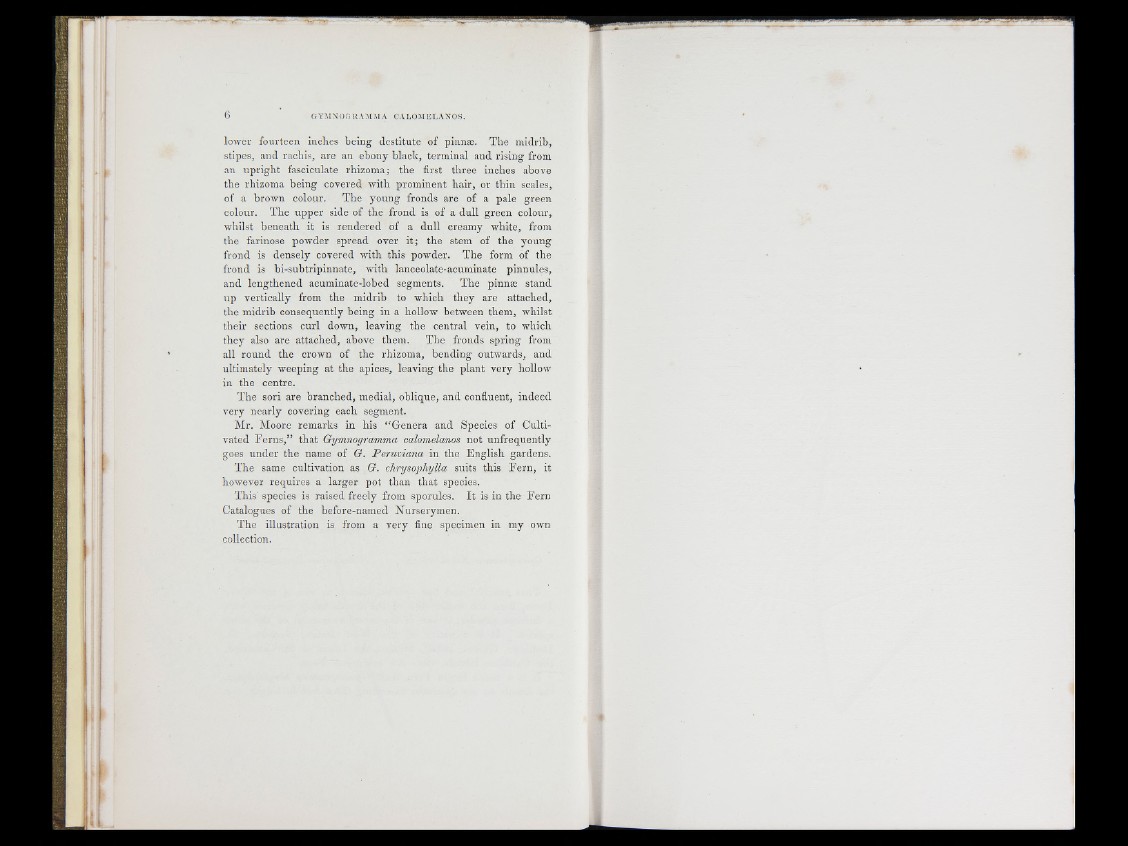
lower fourteen inches being destitute of pinna;. The midrib,
stipes, and rachis, are an ebony black, terminal and rising from
an u p rig h t fasciculate rhizoma; the first three inches above
the rhizoma being covered with prominent h a ir, or thin scales,
of a brown colour. The young fronds are of a pale green
colour. The up p e r side of the frond is of a d u ll green colour,
whilst beneath it is ren d e red of a dull creamy white, from
the farinose powder spread over it; the stem of the young
frond is densely covered with this powder. The form of the
frond is bi-subtripinnate, Avith lanceolate-acuminate pinnules,
and lengthened acuminate-lobed segments. The pinnse stand
up vertically from the midrib to which they are attached,
the midrib consequently being in a hollow between them, whilst
th e ir sections curl down, leaving the central vein, to which
they also are attached, above them. The fronds spring from
all ro u n d the croAvn of the rhizoma, bending outwards, and
ultimately weeping at the apices, leaving the plant very hollow
in the centre.
The sori are branched, medial, oblique, and confluent, indeed
very n early covering each segment.
Mr. Moore remarks in his “ Genera and Species of Cu ltivated
F e rn s ,” th a t Gymnogramma calomelanos not unfrequently
goes un d e r the name of G. P eruviana in the E nglish gardens.
The same cultivation as G. chrysogPiylla suits this F e rn , it
however requires a larger pot than th a t species.
This species is raised freely from sporules. I t is in the F e rn
Catalogues of the before-named Nurserymen.
T h e illustration is from a very fine specimen in my orvn
collection.